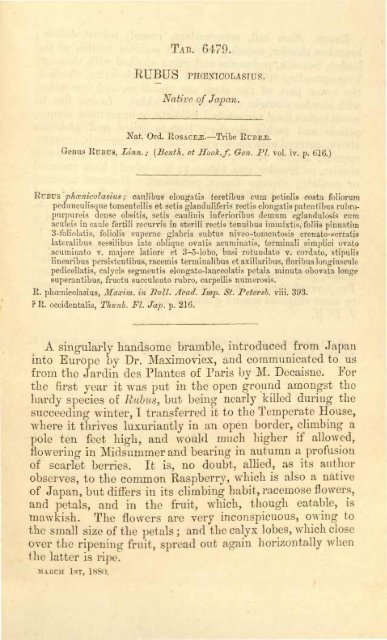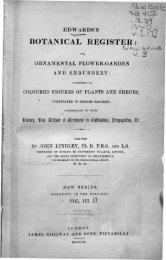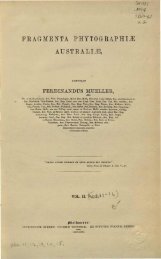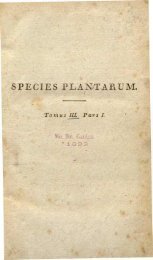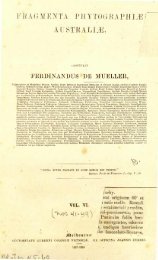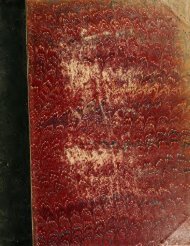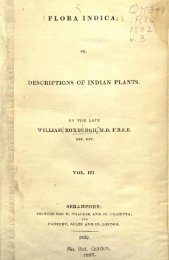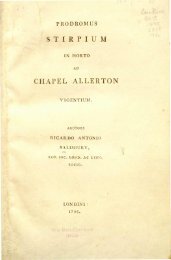Botanical Magazine 106 - 1880.pdf - hibiscus.org
Botanical Magazine 106 - 1880.pdf - hibiscus.org
Botanical Magazine 106 - 1880.pdf - hibiscus.org
Create successful ePaper yourself
Turn your PDF publications into a flip-book with our unique Google optimized e-Paper software.
TAB. 6479.<br />
RUBUS PH•NICOLASIUS.<br />
Native of Japan.<br />
Nat. Ord. ROSACES.•Tribe RUBEJS.<br />
Genus RüBüS, Linn.,- (Benth. et Hook.f. Gen. PL vol. iv. p. (516.)<br />
Rt/BUS ph•nicolasius ; caulibus elongatis teretibus cum petiolis costa foliorum<br />
pedunculisque tomentellis et setis glanduliferis rectis elongatis patentibus rubro-<br />
purpureia dense obsitis, setis caulinis inferioribus demum eglandulosis cum<br />
aculéis incaule fertili recurvis in sterili rectis tenuibus iinmixtis, foliis pinnatim<br />
3-folioIatis, foliolis superne glabris subtus niveo-tomentosis crenato-scrratis<br />
Iateralibus sessilibus late oblique ovatis acuminatis, terminali simplici ovato<br />
acuminato v. majore latiore et 3-5-lobo, basi rotundato v. cordato, stipulés<br />
linearibus persistentibus, racemis terminalibus et axillaribus, floribuslongiuscule<br />
pedicellatis, calycis segmentis elongato-lanceolatis pétala minuta obovata longe<br />
superantibus, fructu succulento rubro, carpellis numerosis.<br />
R. phcenicolasius, Maxim, in Bull. Acad. Imp. St. Petersb. viii. 393.<br />
? R. occidental, Thunb. Fl. Jap. p. 216.<br />
A singularly handsome bramble, introduced from Japan<br />
into Europe by Dr. Maximovicx, and communicated to us<br />
from the Jardin des Plantes of Paris by M. Decaisne. For<br />
the first year it was put in the open ground amongst the<br />
hardy species of Rubiis, but being nearly killed during the<br />
succeeding winter, I transferred it to the Temperate House,<br />
where it thrives luxuriantly in an open border, climbing a<br />
pole ten feet high, and would much higher if allowed,<br />
flowering in Midsummer and bearing in autumn a profusion<br />
of scarlet berries. It is, no doubt, allied, as its author<br />
observes, to the common Raspberry, which is also a native<br />
of Japan, but differs in its climbing habit, racemose flowers,<br />
and petals, and in the fruit, which, though eatable, is<br />
mawkish. The flowers are very inconspicuous, owing to<br />
the small size of the petals ; and the calyx lobes, which close<br />
over the ripening fruit, spread out again horizontally when<br />
the latter is ripe.<br />
MAKCH 1ST, 1880.


